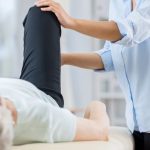 Being able to monitor patients practically 24/7 is something of a holy grail for the medical industry, especially for patients with long-term conditions that require the early detection of complications.
Being able to monitor patients practically 24/7 is something of a holy grail for the medical industry, especially for patients with long-term conditions that require the early detection of complications.
Progress is slowly being made, with a recent paper by researchers at the University of Waterloo highlighting the extent of this progress. It describes the creation of a small, tube-like device that is fitted to the braces patients are given after joint surgery. The sensor sends information to computers or mobile devices to enable the range of motion of the wearer to be tracked.
“That data would be continuously collected, so it would be as though the physician or physiotherapist was always there, always observing the patient,” the researchers say.
Whilst the paper describes the use case of motion tracking, the team believe it can also be used in various other ways, including non-medical use cases, such as tracking the performance of tires on autonomous vehicles.
Early stages
The project is at an early stage, but a prototype was built and tested by the research team that harvested energy from a combination of electromagnetism and triboelectricity, which allows the sensor to work without having a battery attached.
This efficient energy source makes the sensors especially useful in environments where battery usage is either complicated or expensive. The sensors, which are about 6cm by 1cm, could be built commercially for as little as $5 each.
The team are now working on making them even smaller and more sensitive, whilst also working on software that can be used to process the data generated by them. In addition to medical uses, the team believe this could make them especially valuable to the automotive sector by allowing autonomous vehicles to make instant adjustments in their steering based upon environmental conditions.
“Based on the forces, the interaction between the road and the tires, we could actually detect ice or rain,” they say. “That is extremely important information for autonomous driving.”